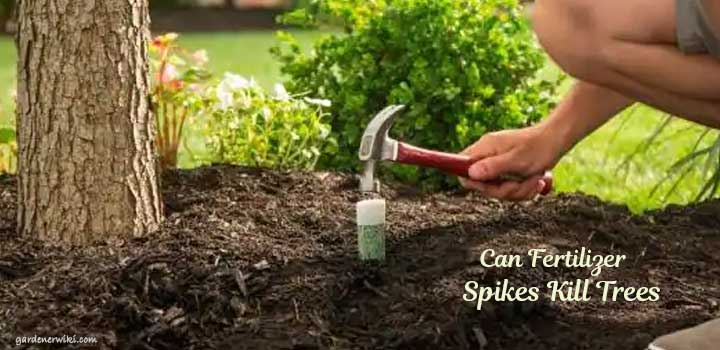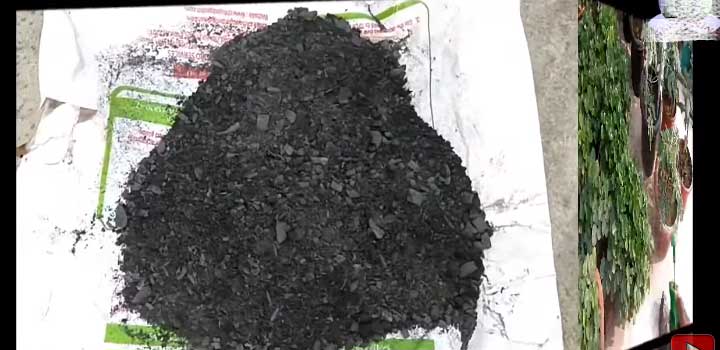If you own a vegetable, flower, or fruit garden, you must know the importance of feeding your trees for better growth and productivity. However, how much and when to apply fertilizer can be challenging. In that case, fertilizer spikes can save you. But can fertilizer spikes kill trees, especially new ones?
Well, fertilizer spikes won’t kill your new trees if you place them accurately in the ground. Spikes are directly placed under the soil, and it releases nutrients gradually for healthy growth. But if you place them close to the roots, it can kill your trees due to over-fertilization.
So how should you place spikes accurately to avoid the chances of weakening or killing the trees? Read on to find out the answer along with other necessary information.
What Are Fertilizer Spikes?
Don’t confuse fertilizer spikes with the standard fertilizer. A standard fertilizer is a chemical or liquid substance that you can apply to the plants to boost their growth and productivity. Fertilizers are blended with the needed nutrients for plants, consisting of nitrogen, potassium, and phosphorus.

On the other hand, fertilizer spikes are generally used for releasing nutrients underground over time. You only need to use fertilizer spikes a few times each year. Besides, these spikes are pre-measured, which reduces the chances of over-fertilization.
Generally, the nutrient-releasing process is triggered by the activity of existing bacteria and fungus. However, some spikes include formaldehyde, so you better be careful while choosing spikes for your garden.
Can You Use Fertilizer Spikes On Any New Trees?
No, you shouldn’t use fertilizer spikes on any new trees. But why?
It’s because fertilizer spikes contain more fertilizer than the ideal amount, and it releases fertilizer near the roots that can kill the new trees or shrubs.
In that case, broadcast fertilizers are the best option to fertilize your new trees. Broadcast fertilizer is an application method in which you spread fertilizer covering the topsoil surface.
Therefore, you have fertilizer spikes installed under the soil, take them out, crumble them, and then spread fertilizer under the trees’ canopy.
However, if you want to fertilize your new trees, then there are some new-tree-friendly fertilizers with the ideal NPK ratio of 10-6-4, 10-8-4, 10-8-6, 12-6-6, and 18-6-12.
Also, make sure you choose fertilizer according to your plant category; for example, there is some good clover fertilizer, then again fertilizer for daylilies, fruits, vegetables, etc.
Does Fertilizer Spikes Work?
Fertilizer spikes are manufactured with the concept of releasing nutrients gradually underneath the soil. Unlike fertilizer, they work by the fungal and bacterial activity to release nutrients.
However, fertilizer spikes may sometimes release nutrients quicker than they should as the releasing method isn’t triggered by water. On the other hand, this method effectively boosts the disease and pests resistance.
So the direct answer to whether fertilizer spikes really work or not is — yes, they work, but sometimes the nutrient releasing process can be quicker.
How Much Fertilizer Do You Need For A Plant?
It’s essential to know how much fertilizer you should apply according to your plant needs. Over-fertilizing destroys your plants’ roots; consequently, your plant dies. So how much fertilizer to apply?
Applying about 1/2 cup of fertilizer per 10 feet in your garden is sufficient. But ideally, how often and how much fertilizer your plant needs is determined by the type of your plant.
However, it’s better to fertilize your plant once they begin to grow. If you add nutrients to the soil at this time, you boost the yield and growth of your most vegetable plants.
You can follow the same fertilizing routine as the spring garden during the fall. Consider applying 1 or 2 pounds of fertilizer for every hundred square feet. Some of the best fertilizers for gardens are Dyna-Gro Liquid Grow Plant Food, FoxFarm Happy Frog All-Purpose Fertilizer, Jack’s Classic Blossom Booster Fertilizer, and so on.
NOTE: 2 cups of fertilizer are equal to 1 pound, and applying more than 3 pounds of fertilizer per 100 square feet can kill your trees.
How Often Should You Use Fertilizer On Your Lawn?
New plants that are growing rapidly should be fertilized annually. Though fertilizer adds some additional value to the plant growth, but never over do it unless you want to kill or destroy your plants.
If you’re fertilizing your lawn for the first time, then look for a starter fertilizer for an established lawn to boost the growth effectively.

In case your lawn is in a premature stage, apply fertilizer once when they are growing. If your lawn is mature enough to fertilize, consider applying fertilizer 2 to 3 times annually in order to nourish the color and vigor of your plant.
And in the case of full feeding established lawn, you can spread fertilizer 5 to 6 times annually. However, during the cool season or late spring, applying fertilizer once is enough, but it’s recommended to apply fertilizer during this period only if needed.
What Are The Common Signs Of Over Fertilizing?
There are some common signs that indicate that you have been fertilizing your plants more than they need. You should know you’re overfertilizing when you experience:
- Fertilizer crust on the ground
- Leaves are getting yellow and wilting
- Defoliation
- Seedlings death
- Slow growth and probably no growth of plants
- When limp roots get black or brown
- Brown leaf margins and tips.
Can You Recover Plants From Over Fertilizing?
If you see the signs of over-fertilization and your plant is still fighting to stay alive, don’t worry; you can recover your plants from over-fertilizing by following a few easy steps.
- Remove all the remaining fertilizer from the soil.
- Wash away the remaining fertilizer on the plant’s root. Running water through the roots can leach away remaining fertilizer effectively.
- Pull out all damaged foliage from your pants. Then make sure you have waited for at least a month before feeding fertilizer to your plants again.
Can Fertilizer Spikes Kill Trees?
No, fertilizer spikes won’t kill your trees if you place the spikes in the right way. So how to place the spikes?
Don’t install fertilizer spikes too near the trunk of the tree. If you place it close to the trunk, then it’ll over-fertilize the roots, which will weaken and even kill your plants.
Therefore, you should place the spikes at your plants’ drip line. Plus, you can get the best results by using the spikes this way. Some of the effective fertilizer spikes are Miracle-Gro Tree & Shrub Plant Food Spike, Jobe’s Fertilizer Spikes, Jobe’s Tomato Fertilizer Spike, and more.
Pros And Cons Of Fertilizer Spikes
Fertilizer spikes have many advantages, such as promoting your tree’s productivity, increasing disease resistance, etc. But just like fertilizer has many advantages, similarly spikes have some disadvantages too.
Here are the pros and cons of using fertilizer spikes in your garden:
Pros
- The fertilizer spikes release nutrients slowly and reduce the necessity of feeding your trees for a year. It would be best if you place the spikes twice a year during mid-fall and early spring when the upper layer of soil is moist.
- Unlike the bags of granular fertilizer, you can easily apply, handle, and store fertilizer spikes.
- Fertilizer spikes are made with many pre-mixed formulas that make them best for specific uses, for instance, ornamental, fruit tree applications, and evergreen.
- You can boost the disease and pest resistance using fertilizer spikes. It’s because spikes can promote biological activity in the ground.
Cons
- Spikes can shatter easily when you cultivate the ground. However, if you remove the sticks from the ground beforehand, you can avoid this from happening.
- If placed wrong, too much fertilizing will damage and even kill the roots.
- Fertilizer sticks are more expensive than granular fertilizer.
FAQ’S
Are fertilizer spikes bad for trees?
No. In fact, spikes can promote the healthy growth of your trees if you store them in the soil right. In case your trees are new, consider following the broadcast fertilizers to be at the safe hand.
How much fertilizer is too much?
You should apply only 2 or 3 pounds to feed every hundred square feet. If you apply more than this much, it’ll be too much fertilization and consequently kill the plants.
What is the best time to feed your trees?
The best time to feed fertilizer to your plants is late April or early May. Then the best time for the second application is during the late fall when the soil is moist.
How many fertilizer spikes do you need for your trees?
If your tree’s trunk height is somewhere between 2 and 3 inches, you need 2 spikes for a single tree. And for shrubs, you should use one stick for every 3ft of a shrub.
How to use evergreen fertilizer spikes?
Water the spikes properly before placing them on the ground. Make sure you place them following the dripline of trees. After storing in the soil, take general care of your trees, and spikes will work automatically when they should.
Conclusion
You must have got your answer to the question: can fertilizer spikes kill trees or not. Remember, you may sometimes not see the expected results with the spikes as they may release nutrients in a small amount only to the root area instead of across the soil.
Also, make sure you place the sticks away from the tree trunks unless your trees are mature enough to handle over-fertilization. Plus, try choosing fertilizer spikes according to your tree types. Hope you have a blooming garden!